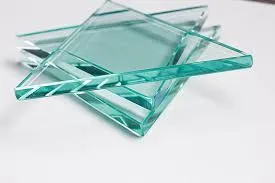The Art and Functionality of Decorative Architectural Glass
Decorative architectural glass has become an increasingly popular feature in contemporary design, marrying aesthetic beauty with practical functionality. This versatile material is used in various structures, from residential homes to commercial buildings, creating unique visual styles while allowing natural light to permeate indoor spaces. The synergy of form and function in decorative glass not only enhances architectural appeal but also reflects the innovative spirit of modern design.
Historical Context
The use of glass in architecture is not a novel concept; it dates back to ancient civilizations where stained glass adorned cathedrals and public buildings. These intricately designed panes served both decorative and devotional purposes, narrating stories of faith and community. The revival of stained glass in the Gothic era and its evolution through the Renaissance period are testament to the enduring allure of this medium. In the modern era, decorative architectural glass has broadened its scope far beyond religious or historical contexts, adapting to appeal to contemporary tastes and requirements.
Types of Decorative Architectural Glass
Today, decorative architectural glass is available in various forms, each lending itself to different applications
. Some popular types include
1. Frosted Glass This glass is treated to have a translucent finish that diffuses light, offering a soft illumination while maintaining privacy. Common in bathrooms and office partitions, frosted glass blends functionality with elegance.
2. Etched Glass Etching allows for intricate designs to be applied to the glass surface, creating stunning visual effects. This technique can produce everything from minimalist patterns to elaborate motifs, making etched glass suitable for both decorative and practical purposes, such as doors and windows.
3. Colored Glass Incorporating color into architectural glass adds vibrancy and personality to a structure. Whether through the use of colored laminates or by mixing pigments into the glass itself, this option can reflect branding in commercial spaces or harmonize with natural surroundings in residential projects.
decorative architectural glass
4. Textured Glass For a more tactile experience, textured glass introduces physical patterns such as ribbing or bubbles. This type not only plays with light but also adds depth and interest to otherwise flat surfaces.
5. Laminated Glass This involves sandwiching layers of glass with plastic interlayers for added safety and sound insulation. Laminated glass can also be printed or colored to achieve striking visual effects while offering strength and resilience.
Benefits of Decorative Architectural Glass
The integration of decorative glass into architectural design comes with a myriad of benefits. First and foremost, it allows for greater natural light infiltration, enhancing the mood and ambiance of the space. Sunlight streaming through beautifully designed glass can create dynamic plays of light and shadow, transforming ordinary areas into captivating environments.
Moreover, decorative glass can contribute to energy efficiency. By incorporating innovative glass technologies, such as low-emissivity coatings, buildings can maintain comfortable indoor temperatures while reducing reliance on artificial heating and cooling systems. This aligns with sustainable architecture practices, which are increasingly vital in today’s eco-conscious world.
In addition, decorative glass often acts as a focal point in design. It can elevate a mundane building facade into a striking piece of art, making it memorable and engaging. Architects use glass to create points of interest, directing the eye and guiding the viewer’s experience of a space.
Conclusion
In conclusion, decorative architectural glass is not merely a design choice; it embodies a blend of artistic expression, structural ingenuity, and environmental responsibility. As architects and designers continue to explore innovative applications and techniques within this medium, the potential for architectural glass to transform our built environments seems endless. From historic references to modern advancements, decorative architectural glass remains a significant element in the evolving narrative of architecture. Embracing both beauty and utility, it represents the perfect intersection of art and science, shaping not just spaces, but the experience of those who inhabit them.
 Afrikaans
Afrikaans  Albanian
Albanian  Amharic
Amharic  Arabic
Arabic  Armenian
Armenian  Azerbaijani
Azerbaijani  Basque
Basque  Belarusian
Belarusian  Bengali
Bengali  Bosnian
Bosnian  Bulgarian
Bulgarian  Catalan
Catalan  Cebuano
Cebuano  Corsican
Corsican  Croatian
Croatian  Czech
Czech  Danish
Danish  Dutch
Dutch  English
English  Esperanto
Esperanto  Estonian
Estonian  Finnish
Finnish  French
French  Frisian
Frisian  Galician
Galician  Georgian
Georgian  German
German  Greek
Greek  Gujarati
Gujarati  Haitian Creole
Haitian Creole  hausa
hausa  hawaiian
hawaiian  Hebrew
Hebrew  Hindi
Hindi  Miao
Miao  Hungarian
Hungarian  Icelandic
Icelandic  igbo
igbo  Indonesian
Indonesian  irish
irish  Italian
Italian  Japanese
Japanese  Javanese
Javanese  Kannada
Kannada  kazakh
kazakh  Khmer
Khmer  Rwandese
Rwandese  Korean
Korean  Kurdish
Kurdish  Kyrgyz
Kyrgyz  Lao
Lao  Latin
Latin  Latvian
Latvian  Lithuanian
Lithuanian  Luxembourgish
Luxembourgish  Macedonian
Macedonian  Malgashi
Malgashi  Malay
Malay  Malayalam
Malayalam  Maltese
Maltese  Maori
Maori  Marathi
Marathi  Mongolian
Mongolian  Myanmar
Myanmar  Nepali
Nepali  Norwegian
Norwegian  Norwegian
Norwegian  Occitan
Occitan  Pashto
Pashto  Persian
Persian  Polish
Polish  Portuguese
Portuguese  Punjabi
Punjabi  Romanian
Romanian  Russian
Russian  Samoan
Samoan  Scottish Gaelic
Scottish Gaelic  Serbian
Serbian  Sesotho
Sesotho  Shona
Shona  Sindhi
Sindhi  Sinhala
Sinhala  Slovak
Slovak  Slovenian
Slovenian  Somali
Somali  Spanish
Spanish  Sundanese
Sundanese  Swahili
Swahili  Swedish
Swedish  Tagalog
Tagalog  Tajik
Tajik  Tamil
Tamil  Tatar
Tatar  Telugu
Telugu  Thai
Thai  Turkish
Turkish  Turkmen
Turkmen  Ukrainian
Ukrainian  Urdu
Urdu  Uighur
Uighur  Uzbek
Uzbek  Vietnamese
Vietnamese  Welsh
Welsh  Bantu
Bantu  Yiddish
Yiddish  Yoruba
Yoruba  Zulu
Zulu 

